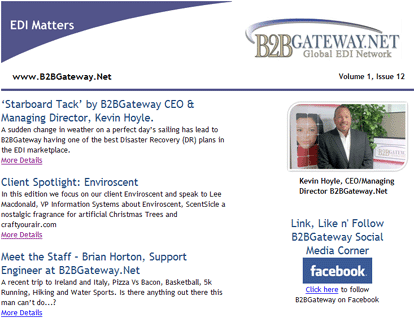Although
EDI (Electronic Data Interchange) has been around since the late 1970’s, it
started gaining increased traction in the early to mid 1990’s. The increased
popularity in the 1990’s was mainly due to a heavy push from large
organizations with large transactional volumes to reduce costs and increase
efficiencies through automation.
Unfortunately,
the very thought of EDI, can be daunting for an organization that has not used
EDI before or has limited IT resources. The initial reaction is that EDI has
been ‘forced’ on their organization by a large retailer or trading partner.
Terms such as ANSI X12, UN/EDIFACT, Tradacoms, VAN, AS2, seem like Double Dutch and better still, the
traditional English language has been replaced by numeric values, e.g. a
Purchase Order is now called an 850, an Invoice becomes an 810, a Ship Notice
becomes an 856, and so on. After a short period in production, the new EDI user
will suddenly understand the benefits of EDI for their organization – reduced errors,
shorter order to payment cash cycles, and reduced costs.
As mentioned
above, there are many standards and communication protocols associated with EDI
– in North America ANSI X12 is the predominant EDI standard, whereas in Europe
and the Far East a far more popular standard is UN/EDIFACT. Some trading
partners prefer to communicate through a VAN (Value Added Network), whereas
others will prefer AS2 or FTP. Add to this mix a myriad of 318+ recognized EDI
documents, customized mapping and reporting functions and it is clear to see
why EDI becomes a daunting task for any organization.
It is at
this stage that outsourcing your EDI requirements should make sense to your
organization. Outsourced EDI solution providers come in various shapes and
sizes. Some providers will require you to invest in your own mapping solution
and they then develop the maps. Then there are others, like B2BGateway.Net,
that provide the entire service and are also the first point of contact between
your organization and your trading partners to resolve any EDI issues that may
arise.
